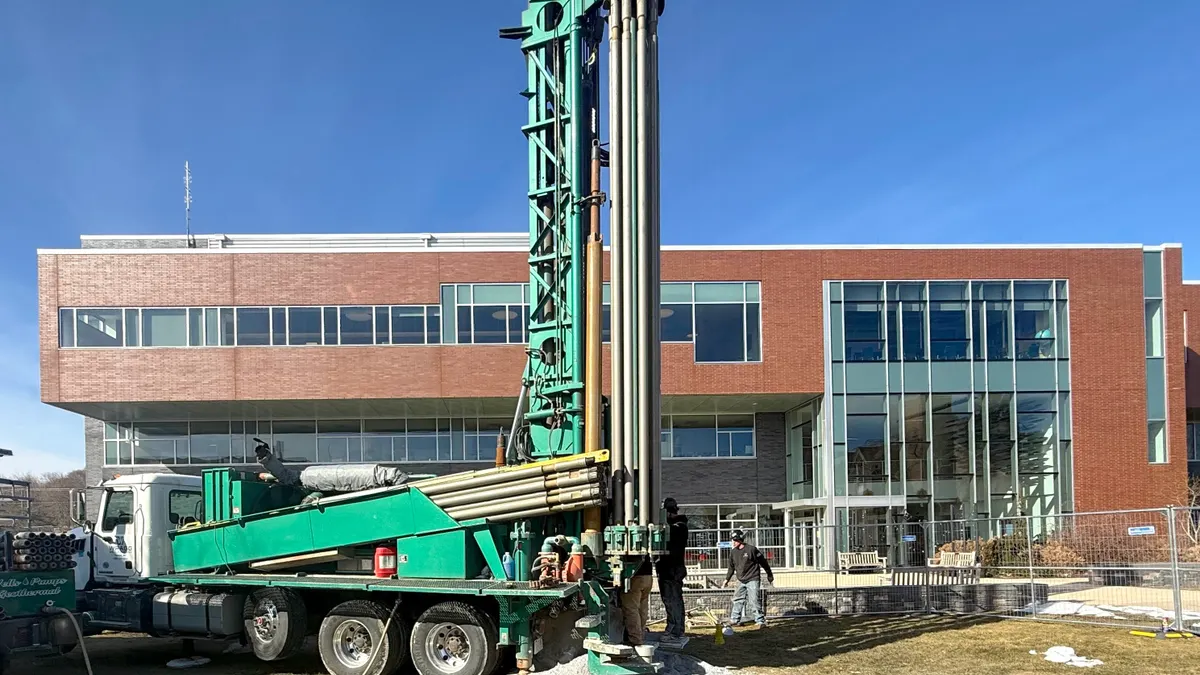Dive Brief:
- Contrasting climate policies from U.S. presidential candidates Kamala Harris and Donald Trump could have major implications for real estate businesses, according to a report from Climate X.
- Under a Harris administration, businesses might see more stringent environmental regulations, with continued support for clean energy programs through policies like the Inflation Reduction Act, a Climate X spokesperson said in an email to Facilities Dive. Conversely, a Trump administration could favor deregulation, impacting planning and investment strategies around climate adaptation and energy efficiency improvements, Climate X’s report says.
- “Commercial building operators may need to adjust the pace and extent of their transition plans to net zero, aligning them with the regulatory expectations of each administration — a faster pace under a Harris administration or a more relaxed approach under a Trump administration,” Climate X co-founder and Chief Operating Officer Kamil Kluza said in an interview. “However, climate adaptation-building asset resiliency is more of a commercial strategy than a policy decision,” Kluza said, noting that many of Climate X’s U.S. asset manager clients, including CBRE and JLL, are already taking proactive steps towards climate-proofing their assets.
Dive Insight:
Clean energy tax credits under the IRA could cost an estimated $780 billion by 2031, nearly three times the amount estimated by the U.S. Congressional Budget Office and Joint Committee on Taxation, according to a Brookings Institution paper that cites an Electric Power Research Institute model. By investing heavily in clean energy, the Biden-Harris administration seeks to not only reduce carbon emissions nationwide, but also create new economic opportunities, Climate X’s report says.
The climate risk management firm noted that if Harris is elected, climate change policies prioritizing clean energy are likely to continue and expand on a trajectory toward achieving net-zero emissions by 2050. Harris’ agenda includes significant investments in green infrastructure and clean energy technologies, like electric heat pumps, and charging a $900 to $1,500 per ton fee for methane pollution in the oil and gas industry.
With former President Trump recently pledging to revoke any unspent funds under the IRA, there are concerns that his criticism of the IRA and other clean energy policies could have an impact, if he is elected for a second term. Trump’s 2024 agenda, outlined in his Agenda 47, promises to boost domestic oil and natural gas production by encouraging more drilling and production activities that can reduce energy and electricity costs, while maintaining over 80% of energy independence.
“Trump’s energy policy focuses on fossil fuel dominance… and scaling back renewable energy policies in support of initiatives for cheap energy supply,” Climate X’s report notes.
Meanwhile, the property market is vulnerable to dynamics influenced by fluctuating interest rates, rising service charges and shifting investor preferences toward sustainable practices, per the report. Rising service charges, for example, can strain property owners’ finances, potentially impacting property values. This challenge is further exacerbated by climate change strategies that require additional maintenance activities, such as installing flood-resistant materials, upgrading roofing or implementing cooling systems, according to the report.
“Effective cost management and climate-resilient design can mitigate these increases, maintaining property attractiveness and investor appeal,” Climate X notes.
Regardless of which political party assumes office, commercial building operators can adopt specific climate-resilient strategies and technologies to future-proof their assets, Kluza said. To that end, Kluza recommends a three-step process that begins with understanding the level of physical risk, identifying asset vulnerabilities and quantifying potential losses that can manifest as physical damages or loss of revenues.
The next step involves understanding whether existing assets or new investments can still generate revenue if certain adaptive measures are introduced. “This can range from large-scale infrastructure projects like flood defenses to simpler solutions like roof bracings to protect against tropical cyclone winds,” Kluza said. “Lastly, if the decision to adapt is made, it is important to engage specialist engineering teams to ensure the risks are mitigated effectively.”
Enhanced climate resilience involves incorporating sustainable building practices, such as waste reduction technologies and energy-efficient systems like solar panels, green roofs and advanced insulation, throughout a building’s lifecycle, according to the report.
Amid a growing investor demand for climate-friendly assets, “we see firms diversifying their climate budgets beyond climate mitigation — pure CO2 reduction — alone, to include both physical risk portfolio analysis and adaptation finance,” Kluza said. “While election outcomes will certainly affect sustainability goals, physical risk management sits somewhat apart from these changes. Recent U.S. hurricane experiences and the resulting industry mobilization after is a testament to the growing focus on adaptation.”













